Technology
The first company to use upgraded Apple Wallet tickets is… Ticketmaster

Ticketmaster that it will be the first ticketing company to take advantage of new features that arrived in Apple Wallet with iOS 18. According to a blog post from the business, Ticketmaster tickets viewed in the Apple app can show enhanced information such as venue maps, parking directions, local weather forecasts and recommended listening from Apple Music. Teams and event spaces can also choose to add links to their own apps or websites that customers can access from their Wallet tickets.
The company is first applying the new tech to two sporting events this year, and said it will be rolling out the capabilities to more events in 2025. While Ticketmaster is touting its role as the first adopter of the new Wallet ticket experience, the new features will not only be available to that company. Considering Ticketmaster was in the PR images the new features, it seems likely that the companies had an agreement about how they’d jointly promote the updates.
Apple Wallet boasts several upgrades in the latest operating system release, such as a new feature for faster money transfer. The initial iOS 18 rollout last month had some good stuff, but the marquee debut of Apple Intelligence likely won’t happen until .
Servers computers
The amazing Server rack for data center
Technology
The best fast chargers for 2024
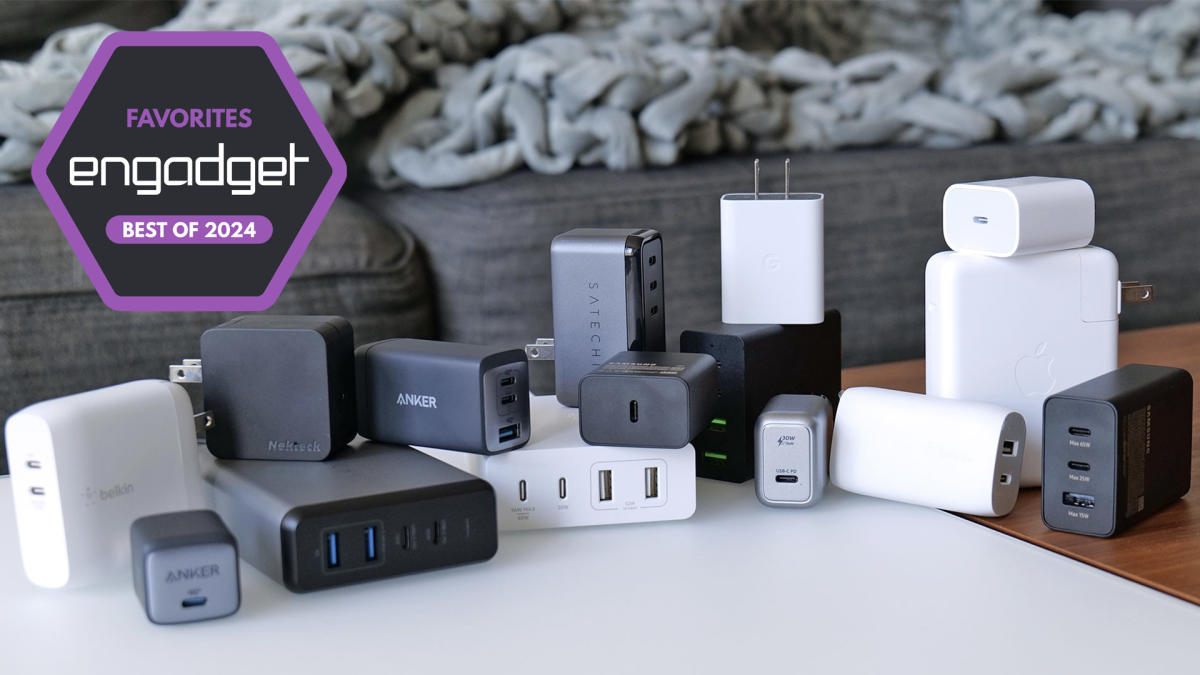
In today’s world of power-hungry smartphones, tablets and laptops, a fast charger is no longer just a nice-to-have item — it’s a must-have. With many devices no longer including a charger in the box (yes, we’re looking at you, iPhone 16), grabbing a reliable wall charger can save you the hassle of trying to find one when your battery hits that dreaded 1 percent. And the best part? You don’t have to clutter your space with different chargers for every device, as one fast charger can often handle them all.
Whether you’re looking for something compact and foldable to toss in your bag, a dual-port charger to power up both your phone and tablet at the same time or a super fast charging option for your laptop, there’s a fast charger for every need. Modern adapters come in all shapes and sizes, from fast wall chargers for home use to power banks for charging on the go, and even hubs that can charge multiple devices at once. You’ll also find Type-C chargers becoming more common, thanks to their faster charging speeds and near-universal compatibility with most new devices.
While they do generally require more power, fast chargers don’t always have to be plugged into the wall either. There are plenty of fast wireless charging options, too. No more fumbling with connectors or cables when you’re in a rush. Just place your device on a charging pad, and you’re good to go. We’ve tested out some of the most popular fast chargers to find the ones worth your money.
Editor’s Note (June 2024): While we’re still waiting for more new chargers to come out so we can do a full update to our guide, some appealing options have hit the market recently. At the end of March, Pluggable announced a super slim two-port 40W USB-C adapter that seems like a great travel companion for keeping a phone and a tablet topped up simultaneously. One neat feature is its smart power allocation tech, which allows the charger to dynamically shift how much juice each device gets to best maximize efficiency.
Meanwhile, for those looking for something beefier, UGreen released an entire new line of devices with enticing specs. The most notable of these is a 160-watt GaN charger, featuring four ports (three USB-C and one USB-A) that can split power output between multiple devices at once or charge one laptop at up to 140 watts. This gives UGreen’s brick a ton of flexibility while still being able to refill even a beefy 16-inch MacBook Pro at top speed. Alternatively, Satechi’s latest 145w charger offers similar (though slightly lower) power output and comes with an assortment of international plug adapters, which could be a real luxury for frequent travelers. But perhaps most importantly, both of these devices cost $40 to $50 less than our current favorite high-wattage charger (Razer’s 130W GaN adapter), so we’re looking forward to testing these out in more depth soon.
Best fast chargers for 2024
Number of ports: 1 | Ports: USB-C | Dimensions: 1.12 x 1.12 x 1.39 inches | Compatibility: Phones, tablets, laptops (limited) | Cable: Not included | Charging speed: 30W
When it comes to charging small devices, 30 watts is by far the most popular as it covers most cell phones along with some larger devices like the Nintendo Switch. In our testing, all of the 30-watt chargers performed equally well, with each one able to get the iPhone to around 80 percent battery charge in less than an hour while also completely refilling the Galaxy phone in 60 minutes. However, as you can see, these smaller, low-wattage bricks struggled to refill both the XPS 13 and especially the MacBook Pro. Yes, you can do it, but it’s rather sluggish (the XPS 13 even surfaced a slow charger notification), and because I tested each device while idle, there’s a good chance these chargers may not be able to keep these laptops topped up while under load.
However, the one thing that sticks out is the performance of Apple’s 20-watt brick, whose lower output caused it to lag behind — every other adapter provided faster charging. While it was able to keep up with rival devices when refilling the iPhone, its wattage is so low it couldn’t even trickle charge the XPS 13. Dell’s power management did not even recognize that a charger was plugged in. That means this adapter is much less useful if you need to quick charge more power-hungry gadgets in a pinch. And I should mention I didn’t bother testing the old 15-watt Apple power cubes, which can’t even support the iPhone’s full 20-watt charging speeds. Anyone still using one of those really ought to upgrade to a fast wall charger.
1 / 5
If all you want is a power brick to keep small devices powered up, our choice for best charger is clear: the Anker Nano. Not only did it deliver the best speeds in its class, but it’s also the smallest, which makes it super easy for it to disappear in a bag. The one we tested, the Anker 711 charger, is an older model at this point, but you should get the same performance from the latest version, the 30W Nano 3. However, it’s worth noting that both models support Type-C charging only, and do not feature a USB-A port.
Number of ports: 3 | Ports: 2 x USB-C. 1 x USB-A | Dimensions: 2.6 x 1.51 x 1.15 inches | Compatibility: Phones, tablets, laptops | Cable: Not included | Charging speed: 65W
Here’s where things start to get interesting because while a number of these chargers have similar power outputs (aside from the Samsung 45-watt brick, of course), the actual results were a bit more varied. Both the Nekteck and the Belkin only managed to get the Galaxy phone to around 80 percent battery after an hour, compared to the Anker, Samsung and Satechi chargers which all hit 100. This suggests that both chargers aren’t properly communicating with Samsung’s phone in order to take advantage of its super-fast charging speeds, which I was able to confirm by using a USB-C volt meter. Meanwhile, as expected, Samsung’s 45-watt charger did great when connected to the Galaxy handset, but its lower output meant it could not keep up with the 60 and 65-watt bricks.
Somewhat surprisingly, every charger in this category performed well when hooked up to the XPS 13, with each adapter finishing within one percent of each other (around 58 percent) after an hour. However, when it comes to the thirsty MacBook Pro, every extra watt makes a difference, with the Anker 735 and Samsung Triple Port Charger edging out the competition, even though they’re still much slower than Apple’s included brick. It’s also telling that on the Belkin 60W, its fastest charging port actually denotes charging speeds of between 50 and 60 watts, which is why it couldn’t quite keep up with the other 60-watt chargers I tested.
1 / 5
As for picking a winner, Nekteck’s 60-watt brick is the cheapest while also being one of the few options that come with an included charging cable. However, with only a single charging port and sub-optimal compatibility with the Samsung phone, it’s hard to fully recommend. For my money, I’d go with the Anker 735 as it’s smaller, slightly faster and the same price as Samsung’s 65W Triple Port charger, while still offering a total of three USB ports (two USB-C and one USB-A port). Plus, its foldable prongs make it perfect for traveling.
Number of ports: 4 | Ports: 2 x USB-C, 2 x USB-A | Dimensions: 2.44 x 3.03 x 1.26 inches | Compatibility: Phones, tablets, laptops | Cable: 2M Type-C to Type-C included | Charging speed: 130W
For anyone considering a high-power USB-C fast charger, here’s where it’s important to pay attention to the fine print. While all of these bricks are listed at or above 100 watts, the primary charging ports on the Satechi and Belkin are actually capped at 90 or 96 watts. And that’s before you consider multi-device charging, which splits the total output across the other ports with the ratio varying depending on the specific model. This is where hubs or dual-port chargers can come in handy, as they allow you to charge multiple devices more efficiently.
During testing, all four had no issue topping up the smartphones, the Switch and the XPS 13, though once again Belkin’s adapter couldn’t fully recharge the Galaxy phone despite having more than enough wattage. On the flip side, while Razer’s USB C charger has a higher max output than either the Belkin or the Satechi, there wasn’t much difference in charging speeds when connected to the MacBook Pro. And this isn’t due to a lack of higher wattage cables, as both USB-C ports on the Razer brick are capped at a combined 100 watts.
1 / 5
Meanwhile, as one of the rare 140-watt power adapters on the market, Apple’s brick is super quick and did an expectedly great job of refilling the MacBook Pro. However, I should mention that it’s the only power brick in this segment that comes with a single port, which kind of feels like a missed opportunity for the Apple ecosystem. For those who need extra flexibility, wireless charging options are worth considering, though they might not offer the same speed as wired connectors.
So for anyone that wants a charger that can top up an ultraportable laptop quickly while still having juice to spare, I prefer Razer’s 130-watt GaN adapter. It’s the best charger in this category, as well as the smallest and most expensive at $180. On top of that, it comes with two international wall adapters (for UK and EU outlets) and a braided 100-watt USB-C cable, all of which you don’t get from any others in this category. If you need a reliable power bank or fast charger on the go, this could be a good investment.
Wrap-up
Obviously, there are a lot more than just 14 super fast chargers on the market, and sadly I don’t have the time to test them all. These days, discharging a phone from 100 percent battery to dead can take upwards of 15 hours, so depending on the device, I can only test one USB phone charger per day. Just gathering all this data took the better part of two months. And unfortunately, while I was running this test, Anker came out with a new generation of power adapters that I haven’t had the chance to evaluate just yet.
That said there are still some important takeaways. First, in order to ensure optimal charging speeds, you should pay attention to the charging standards of your device and the fast charger; make sure your charger can supply the proper amount of power. Manufacturers typically list a device’s max charging speeds, while power adapters clearly label their USB types and outputs. And when in doubt, you can look at the fine text on the charger itself, though you might have to do some math. Just remember, watts equals volts times amps. Furthermore, in the case of adapters with multiple ports, you’ll check to see how its total wattage is split when connected to multiple devices.
Then there are other factors like size and weight you’ll want to consider, with newer gallium nitride adapters (GaN) often featuring more compact designs and better power efficiency. And if you’re ever truly in doubt, you can simply opt for a fast charger made by the same company as your Android phone, iPhone, laptop or other gadgets, something that’s especially true for devices like the OnePlus 10T that feature speedy proprietary charging protocols.
How we tested fast chargers
The methodology for my fast charging experiment is intended to be as straightforward as possible. I drained each device to 10 percent battery, plugged in a power brick and then recorded the amount of charge added every 10 minutes for an hour. Each adapter was plugged directly into a standard 120-volt outlet (without the use of a power strip or any extension cords), and when possible I used the cable that either came included with the battery charger or one made by the same manufacturer as the device. If that wasn’t an option, I used certified 100-watt USB-C cables made by Anker, Apple and others.
Because the charging rate for devices varies depending on how much juice you have, I wanted to measure how well each adapter was able to match each gadget’s optimal charging speed. Generally, charging is slower between zero and 20 percent before speeds ramp up until the battery hits 80 percent, at which point things slow down again to protect and preserve the health and longevity of the power cell. For charging stations with multiple ports, I always selected the port with the highest power output while also not having multiple devices connected.
As for the devices themselves, I selected an Apple iPhone 13, a Samsung Galaxy S22 Ultra, a Nintendo Switch (a launch model from 2017), a 2021 Dell XPS 13 and a 16-inch M1 Max MacBook Pro. This assortment was chosen to cover a wide range of specs and power draws from 20 watts (iPhone 13) all the way up to 140 watts (M1 Max MBP). Also, every system was tested while idle (i.e. no additional apps or games running) in order to ensure consistent results.
One important thing to note is that while the USB Implementers Forum has approved support for USB Power Delivery (USB-PD) charging at up to 240 watts, adapters that actually support that power output don’t exist yet. Additionally, while there are a handful of cables that can handle more than 100 watts of juice, they are somewhat rare or hard to get.
What is GaN?
When looking for chargers, you may notice that some are marked as GaN, which stands for gallium nitride. This is an important distinction because, compared to older adapters that use silicon switches, GaN-based devices support increased power efficiency and output, allowing manufacturers to create more compact chargers that run cooler and support higher wattages. Depending on the specific power output, GaN chargers can be 30 to 50 percent smaller and lighter than silicon-based alternatives. That might not sound like much, but when they’re sitting in a bag alongside a laptop, phone and any other accessories you might have, cutting down on excess bulk and weight can go a long way.
Fast chargers we tested
With so many different chargers of varying power outputs to test, I broke things down into three categories. There are the 30-watt and under chargers, which are primarily designed for smartphones and other small mobile devices. Then we move up to 45 to 65-watt chargers (give or take a watt or two) that can handle things like phones along with a number of thin and light laptops. Finally, we have chargers that output 100 watts or more, which are good for pretty much anything besides the biggest and most power-hungry gaming laptops. Many of these higher wattage adapters also feature multiple ports, so can you top up additional devices at full speed. However, because not every power brick supports multi-device charging, I didn’t include that as a testing metric.
You can see a full list of the chargers we tested below:
Technology
AMD unveils AI-infused chips across Ryzen, Instinct and Epyc brands
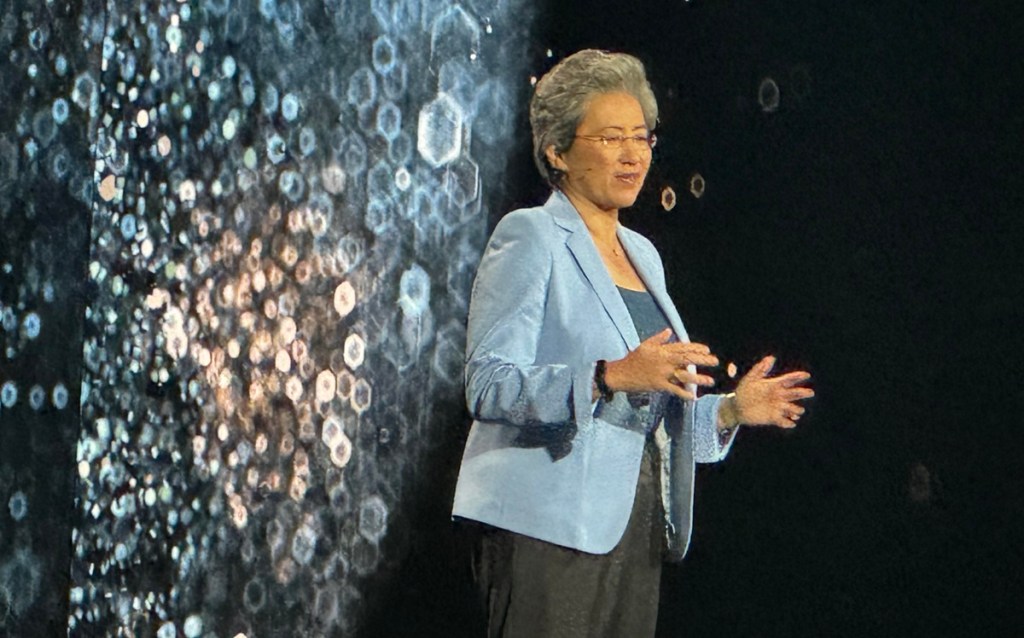
Join our daily and weekly newsletters for the latest updates and exclusive content on industry-leading AI coverage. Learn More
Speaking at an event in San Francisco, AMD CEO Lisa Su unveiled AI-infused chips across the company’s Ryzen, Instinct and Epyc brands, fueling a new generation of AI computing for everyone from business users to data centers.
Throughout the event, AMD indirectly made references to rivals such as Nvidia and Intel by emphasizing its quest to provide technology that was open and accessible to the widest variety of customers, without an intent to lock those customers into proprietary solutions.

Su said AI will boost our personal productivity, collaboration will become much better with things like real-time translate, and it will make life easier whether you are a creator or ordinary user. It will be processed locally, to protect your privacy, Su said. She noted the new AMD Ryzen AI Pro PCs will be CoPilot+-ready and offer up to 23 hours of battery life (and nine hours using Microsoft Teams).
“We’ve been working very closely with AI PC ecosystem developers,” she said, noting more than 100 will be working on AI apps by the end of the year.
Commercial AI mobile Ryzen processors

AMD announced its third generation commercial AI mobile processors, designed specifically to transform business productivity with Copilot+ features including live captioning and language translation in conference calls and advanced AI image generators. If you really wanted to, you could use AI-based Microsoft Teams for up to nine hours on new laptops equipped with the AMD processors.
The new Ryzen AI PRO 300 Series processors deliver industry-leading AI compute, with up to three times the AI performance than the previous generation of AMD processors. More than 100 products using the Ryzen processors are on the way through 2025.
Enabled with AMD PRO Technologies, the Ryzen AI PRO 300 Series processors offer high security and manageability features designed to streamline IT operations and ensure exceptional ROI for businesses.
Ryzen AI PRO 300 Series processors feature new AMD Zen 5 architecture, delivering outstanding CPU performance, and are the world’s best line up of commercial processors for Copilot+ enterprise PCs5. Zen, now in its fifth generation, has been the foundation behind AMD’s own financial recovery, its gains in market share against Intel, and Intel’s own subsequent hard times and layoffs.
“I think the best is that AMD continue to execute on a solid product roadmap. Unfortunately they are making performance comparisons to the competition’s previous generation products,” said Jim McGregor, an analyst at Tirias Research, in an email to VentureBeat. “So, we have to wait and see how the products will compare. However, I do expect them to be highly competitive especially the processors. Note that AMD only announced a new architecture for nenetworking, everything else is evolutionary but that’s not a bad thing when you are in a strong position and gaining market share.”
Laptops equipped with Ryzen AI PRO 300 Series processors are designed to tackle business’ toughest workloads, with the top-of-stack Ryzen AI 9 HX PRO 375 offering up to 40% higher performance and up to 14% faster productivity performance compared to Intel’s Core Ultra 7 165U, AMD said.
With the addition of XDNA 2 architecture powering the integrated NPU (the neural processing unit, or AI-focused part of the processor), AMD Ryzen AI PRO 300 Series processors offer a cutting-edge 50+ NPU TOPS (Trillions of Operations Per Second) of AI processing power, exceeding Microsoft’s Copilot+ AI PC requirements and delivering exceptional AI compute and productivity capabilities for the modern business.
Built on a 4 nanometer (nm) process and with innovative power management, the new processors deliver extended battery life ideal for sustained performance and productivity on the go.
“Enterprises are increasingly demanding more compute power and efficiency to drive their everyday tasks and most taxing workloads. We are excited to add the Ryzen AI PRO 300 Series, the most powerful AI processor built for business PCs10 , to our portfolio of mobile processors,” said Jack Huynh, senior vice president and general manager of the computing and graphics group at AMD, in a statement. “Our third generation AI-enabled processors for business PCs deliver unprecedented AI processing capabilities with incredible battery life and seamless compatibility for the applications users depend on.”
AMD expands commercial OEM ecosystem
OEM partners continue to expand their commercial offerings with new PCs powered by Ryzen AI PRO 300 Series processors, delivering well-rounded performance and compatibility to their business customers. With industry leading TOPS, the next generation of Ryzen processor-powered commercial PCs are set to expand the possibilities of local AI processing with Microsoft Copilot+. OEM systems powered by Ryzen AI PRO 300 Series are expected to be on shelf starting later this year.
“Microsoft’s partnership with AMD and the integration of Ryzen AI PRO processors into Copilot+ PCs demonstrate our joint focus on delivering impactful AI-driven experiences for our customers. The Ryzen AI PRO’s performance, combined with the latest features in Windows 11, enhances productivity, efficiency, and security,” said Pavan Davuluri, corporate vice president for Windows+ Devices at Microsoft, in a statement. “Features like Improved Windows Search, Recall, and Click to Do make PCs more intuitive and responsive. Security enhancements, including the Microsoft Pluton security processor and Windows Hello Enhanced Sign-in Security, help safeguard customer data with advanced protection. We’re proud of our strong history of collaboration with AMD and are thrilled to bring these innovations to market.”
“In today’s AI-powered era of computing, HP is dedicated to delivering powerful innovation and performance that revolutionizes the way people work,” said Alex Cho, president of Personal Systems at HP, in a statement. “With the HP EliteBook X Next-Gen AI PC, we are empowering modern leaders to push boundaries without compromising power or performance. We are proud to expand our AI PC lineup powered by AMD, providing our commercial customers with a truly personalized experience.”
“Lenovo’s partnership with AMD continues to drive AI PC innovation and deliver supreme performance for our business customers. Our recently announced ThinkPad T14s Gen 6 AMD, powered by the latest AMD Ryzen AI PRO 300 Series processors, showcases the strength of our collaboration,” said Luca Rossi, president, Lenovo Intelligent Devices Group. “This device offers outstanding AI computing power, enhanced security, and exceptional battery life, providing professionals with the tools they need to maximize productivity and efficiency. Together with AMD, we are transforming the business landscape by delivering smarter, AIdriven solutions that empower users to achieve more.”
New Pro Technologies features for security and management
In addition to AMD Secure Processor, AMD Shadow Stack and AMD Platform Secure Boot, AMD has expanded its Pro Technologies lineup with new security and manageability features.
Processors equipped with PRO Technologies will now come standard with Cloud Bare Metal Recovery, allowing IT teams to seamlessly recover systems via the cloud ensuring smooth and continuous operations; Supply Chain Security (AMD Device Identity), a new supply chain security function, enabling traceability across the supply chain; and Watch Dog Timer, building on existing resiliency support with additional detection and recovery processes.
Additional AI-based malware detection is available via PRO Technologies with select ISV partners. These new security features leverage the integrated NPU to run AI-based security workloads without impacting day-to-day performance.
AMD unveils Instinct MI325X accelerators for AI data centers

AMD has become a big player in the graphics processing units (GPUs) for data centers, and today it announced the latest AI accelerators and networking solutions for AI infrastructure.
The company unveiled the AMD Instinct MI325X accelerators, the AMD Pensando Pollara 400
network interface card (NIC) and the AMD Pensando Salina data processing unit (DPU).
AMD claimed the AMD Instinct MI325X accelerators set a new standard in performance for Gen AI models and data centers. Built on the AMD CDNA 3 architecture, AMD Instinct MI325X accelerators are designed for performance and efficiency for demanding AI tasks spanning foundation model training, fine-tuning and inferencing.
Together, these products enable AMD customers and partners to create highly performant and optimized AI solutions at the system, rack and data center level.
“AMD continues to deliver on our roadmap, offering customers the performance they need and the choice they want, to bring AI infrastructure, at scale, to market faster,” said Forrest Norrod, executive vice president and general manager of the data center solutions business group at AMD, in a statement. “With the new AMD Instinct accelerators, EPYC processors and AMD Pensando networking engines, the continued growth of our open software ecosystem, and the ability to tie this all together into optimized AI infrastructure, AMD underscores the critical expertise to build and deploy world class AI solutions.”
AMD Instinct MI325X accelerators deliver industry-leading memory capacity and bandwidth, with 256GB of HBM3E supporting 6.0TB/s offering 1.8 times more capacity and 1.3 times more bandwidth than the Nvidia H200, AMD said. The AMD Instinct MI325X also offers 1.3 times greater peak theoretical FP16 and FP8 compute performance compared to H200.
This leadership memory and compute can provide up to 1.3 times the inference performance on Mistral 7B at FP162, 1.2 times the inference performance on Llama 3.1 70B at FP83 and 1.4 times the inference performance on Mixtral 8x7B at FP16 of the H200. (Nvidia has more recent devices on the market now and they are not yet available for comparisons, AMD said).
“AMD certainly remains well positioned in the data center, but I think their CPU efforts are still their best positioned products. The market for AI accelleration/GPUs is still heavily favoring Nvidia and I don’t see that changing anytime soon. But the need for well optimized and purpose designed CPUs to compliment as a host processor any AI accelerator or GPU is essential and AMDs datacenter CPUs are competitive there,” said Ben Bajarin, an analyst at Creative Strategies, in an email to VentureBeat. “On the networking front, there is certainly good progress here technically and I imagine the more AMD can integrate this into their full stack approach to optimizing for the racks via the ZT systems purchase, then I think their networking stuff becomes even more important.”
He added, “Broad point to make here, is the data center is under a complete transformation and we are still only in the early days of that which makes this still a wide open competitive field over the arc of time 10+ years. I’m not sure we can say with any certainty how this shakes out over that time but the bottom line is there is a lot of market share and $$ to go around to keep AMD, Nvidia, and Intel busy.”
AMD Instinct MI325X accelerators are currently on track for production shipments in Q4 2024 and are expected to have widespread system availability from a broad set of platform providers, including Dell Technologies, Eviden, Gigabyte, Hewlett Packard Enterprise, Lenovo, Supermicro and others starting in Q1 2025.
Updating its annual roadmap, AMD previewed the next-generation AMD Instinct MI350 series accelerators. Based on the AMD CDNA 4 architecture, AMD Instinct MI350 series accelerators are designed to deliver a 35 times improvement in inference performance compared to AMD CDNA 3-based accelerators.
The AMD Instinct MI350 series will continue to drive memory capacity leadership with up to 288GB of HBM3E memory per accelerator. The AMD Instinct MI350 series accelerators are on track to be available during the second half of 2025.
“AMD undoubtedly increased the distance between itself and Intel with Epyc. It currently has 50-60% market share with the hyoerscalers and I don’t see that abating. AMD;’s biggest challenge is to get share with enterprises. Best product rarely wins in the enterprise and AMD needs to invest more into sales and marketing to accelerate its enterprise growth,” said Patrick Moorhead, an analyst at Moor Insights & Strategy, in an email to VentureBeat. “It’s s bit harder to assess where AMD sits versus NVIDIA in Datacenter GPUs. There’s numbers flying all around, claims from both companies that they’re better. Signal65, our sister benchmarking company, hasn’t had the opportunity to do our own tests.”
And Moohead added, “What I can unequivocally say is that AMD’s new GPUs, particularly the MI350, is a massive improvement given improved efficiency, performance and better support for lower bit rate models than its predecessors. It is a two horse race, with Nvidia in the big lead and AMD is quickly catching up and providing meaningful results. The facts that Meta’s live llama 405B model runs exclusively on MI is a huge statement on competitiveness. “
AMD next-gen AI Networking

AMD is leveraging the most widely deployed programmable DPU for hyperscalers to power next-gen AI networking, said Soni Jiandani, senior vice president of the network technology solutions group, in a press briefing.
Split into two parts: the front-end, which delivers data and information to an AI cluster, and the backend, which manages data transfer between accelerators and clusters, AI networking is critical to ensuring CPUs and accelerators are utilized efficiently in AI infrastructure.
To effectively manage these two networks and drive high performance, scalability and efficiency across the entire system, AMD introduced the AMD Pensando Salina DPU for the front-end and the AMD Pensando Pollara 400, the industry’s first Ultra Ethernet Consortium (UEC) ready AI NIC, for the back-end.
The AMD Pensando Salina DPU is the third generation of the world’s most performant and programmable DPU, bringing up to two times the performance, bandwidth and scale compared to the previous generation.
Supporting 400G throughput for fast data transfer rates, the AMD Pensando Salina DPU is a critical component in AI front-end network clusters, optimizing performance, efficiency, security and scalability for data-driven AI applications.
The UEC-ready AMD Pensando Pollara 400, powered by the AMD P4 Programmable engine, is the industry’s first UEC-ready AI NIC. It supports the next-gen RDMA software and is backed by an open ecosystem of networking. The AMD Pensando Pollara 400 is critical for providing leadership performance, scalability and efficiency of accelerator-to-accelerator communication in back-end networks.
Both the AMD Pensando Salina DPU and AMD Pensando Pollara 400 are sampling with customers in Q4’24 and are on track for availability in the first half of 2025.
AMD AI software for Generative AI

AMD continues its investment in driving software capabilities and the open ecosystem to deliver powerful new features and capabilities in the AMD ROCm open software stack.
Within the open software community, AMD is driving support for AMD compute engines in the most widely used AI frameworks, libraries and models including PyTorch, Triton, Hugging Face and many others. This work translates to out-of-the-box performance and support with AMD Instinct accelerators on popular generative AI models like Stable Diffusion 3, Meta Llama 3, 3.1 and 3.2 and more than one million models at Hugging Face.
Beyond the community, AMD continues to advance its ROCm open software stack, bringing the latest features to support leading training and inference on Generative AI workloads. ROCm 6.2 now includes support for critical AI features like FP8 datatype, Flash Attention 3, Kernel Fusion and more. With these new additions, ROCm 6.2, compared to ROCm 6.0, provides up to a 2.4X performance improvement on inference6 and 1.8X on training for a variety of LLMs.
AMD launches 5th Gen AMD Epyc CPUs for the data center

AMD also announced the availability of the 5th Gen AMD Epyc processors, formerly codenamed “Turin,” the “world’s best server CPU for enterprise, AI and cloud,” the company said.
Using the Zen 5 core architecture, compatible with the broadly deployed SP5 platform and offering a broad range of core counts spanning from eight to 192, the AMD Epyc 9005 Series processors extend the record-breaking performance and energy efficiency of the previous generations with the top of stack 192 core CPU delivering up to 2.7 times the performance compared to the competition, AMD said.
New to the AMD Epyc 9005 Series CPUs is the 64 core AMD Epyc 9575F, tailor made for GPU-powered AI solutions that need the ultimate in host CPU capabilities. Boosting up to 5GHz, compared to the 3.8GHz processor of the competition, it provides up to 28% faster processing needed to keep GPUs fed with data for demanding AI workloads, AMD said.
“From powering the world’s fastest supercomputers, to leading enterprises, to the largest Hyperscalers, AMD has earned the trust of customers who value demonstrated performance, innovation and energy efficiency,” said Dan McNamara, senior vice president and general manager of the server business at AMD, in a statement. “With five generations of on-time roadmap execution, AMD has proven it can meet the needs of the data center market and give customers the standard for data center performance, efficiency, solutions and capabilities for cloud, enterprise and AI workloads.”
In a press briefing, McNamara thanked Zen for AMD’s server market share rise from zero in 2017 to 34% in the second quarter of 2024 (according to Mercury Research).
Modern data centers run a variety of workloads, from supporting corporate AI-enablement initiatives, to powering large-scale cloud-based infrastructures to hosting the most demanding business-critical applications. The new 5th Gen AMD Epyc processors provide leading performance and capabilities for the broad spectrum of server workloads driving business IT today.
“This is a beast,” McNamara said. “We are really excited about it.”
The new Zen 5 core architecture, provides up to 17% better instructions per clock (IPC) for enterprise and cloud workloads and up to 37% higher IPC in AI and high performance computing (HPC) compared to Zen 4.
With AMD Epyc 9965 processor-based servers, customers can expect significant impact in their real world applications and workloads compared to the Intel Xeon 8592+ CPU-based servers, with: up to four times faster time to results on business applications such as video transcoding.
AMD said it also has up to 3.9 times the time to insights for science and HPC applications that solve the
world’s most challenging problems; up to 1.6 times the performance per core in virtualized infrastructure.
In addition to leadership performance and efficiency in general purpose workloads, the 5th Gen
AMD Epyc processors enable customers to drive fast time to insights and deployments for AI
deployments, whether they are running a CPU or a CPU + GPU solution, McNamara said.
Compared to the competition, he said the 192 core Epyc 9965 CPU has up to 3.7 times the performance on end-to-end AI workloads, like TPCx-AI (derivative), which are critical for driving an efficient approach to generative AI.
In small and medium size enterprise-class generative AI models, like Meta’s Llama 3.1-8B, the Epyc 9965 provides 1.9 times the throughput performance compared to the competition.
Finally, the purpose built AI host node CPU, the EPYC 9575F, can use its 5GHz max frequency boost to help a 1,000 node AI cluster drive up to 700,000 more inference tokens per second. Accomplishing more, faster.
By modernizing to a data center powered by these new processors to achieve 391,000 units of SPECrate2017_int_base general purpose computing performance, customers receive impressive performance for various workloads, while gaining the ability to use an estimated 71% less power and ~87% fewer servers. This gives CIOs the flexibility to either benefit from the space and power savings or add performance for day-to-day IT tasks while delivering impressive AI performance.
The entire lineup of 5th Gen AMD EPYC processors is available today, with support from Cisco, Dell, Hewlett Packard Enterprise, Lenovo and Supermicro as well as all major ODMs and cloud service providers providing a simple upgrade path for organizations seeking compute and AI leadership.
Dell said that said its 16-accelerated PowerEdge servers would be able to replace seven prior generation servers, with a 65% reduction of energy usage. HP Enterprise also took the stage to say Lumi, one of its customers, is working on a digital twin of the entire planet, dubbed Destination Earth, using the AMD tech.
Daniel Newman, CEO of The Futurum Group and an analyst, said in an email to VentureBeat, “Instinct and the new MI325X will be the hot button from today’s event. It isn’t a completely new launch, but the Q4 ramp will run alongside nvidia Blackwell and will be the next important indicator of AMD’s trajectory as the most compelling competitor to Nvidia. The 325X ramping while the new 350 will be the biggest leap when it launches in 2H of 2025 making a 35 times AI performance leap from its CDNA3. “
Newman added, “Lisa Su’s declaration of a $500 billion AI accelerator market between 2023 and 2028 is an incredibly ambitious leap that represents more than 2x our current forecast and indicates a material upside for the market coming from a typically conservative CEO in Lisa Su. Other announcements in networking and compute (Turin) show the company’s continued expansion and growth.”
And he said, “The Epyc DC CPU business showed significant generational improvements. AMD has been incredibly successful in winning cloud datacenter business for its EPYC line now having more than 50% of share and in some cases we believe closer to 80%. For AMD, the big question is can it turn the strength in cloud and turn its attention to enterprise data center where Intel is still dominant–this could see AMD DC CPU business expand to more than its already largest ever 34%. Furthermore, can the company take advantage of its strength in cloud to win more DC GPU deals and fend off NVIDIA’s strength at more than 90% market share.”
Source link
Servers computers
APC NetShelter Configurable Enclosures Overview
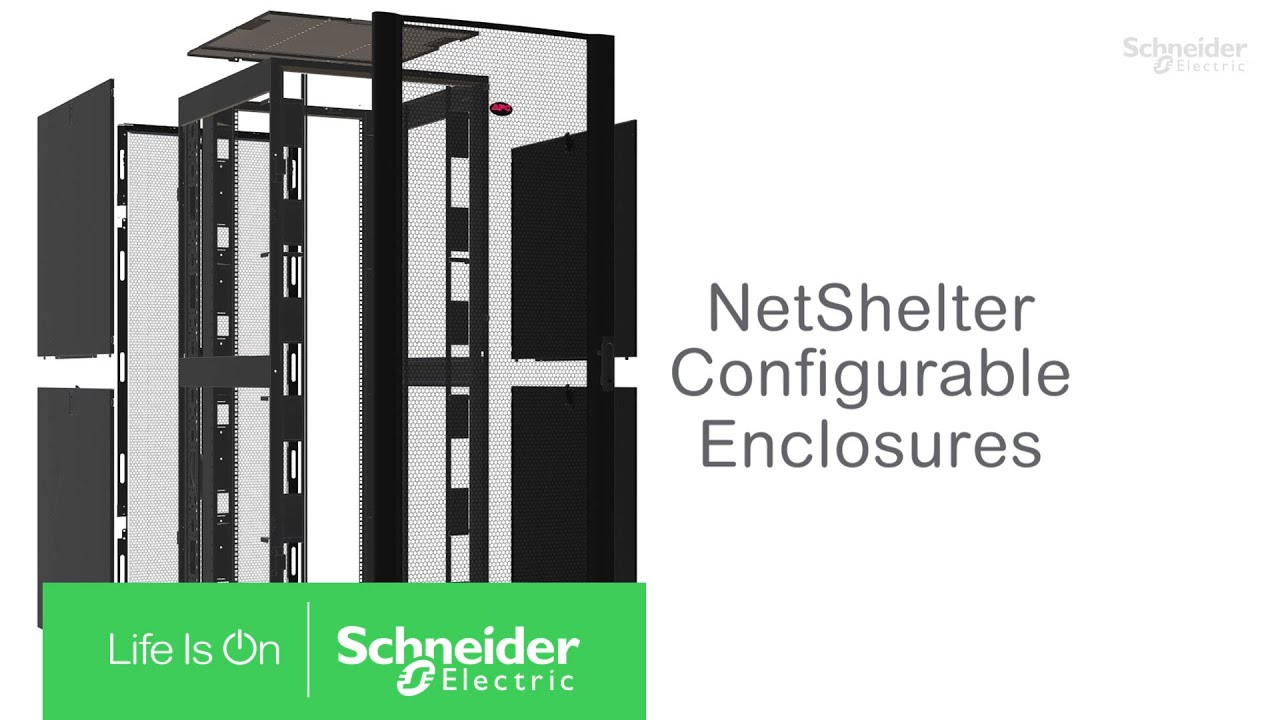
Now introducing APC NetShelter Configurable Enclosures a new NetShelter enclosure range offering maximum configurability in a rack and enclosure platform with quality, design, ease-of-use, and solution compatibility you have come to expect from NetShelter with options for manufacturing in the USA increasing availability and speed of deployment. Configure a rack with APC today visit: https://www.apc.com/configure-my-rack
►Click here to subscribe to APC by Schneider Electric YouTube: https://www.youtube.com/APCbySchneider
Connect with APC by Schneider Electric:
►Global Website: https://www.apc.com
►Discover our Services: http://spr.ly/SE-Services
►Visit our blog: https://blog.apc.com/
►Job Opportunities: http://spr.ly/SE-Careers
►LinkedIn: https://www.linkedin.com/company/apc/
►Facebook: https://www.facebook.com/APCbySchneiderElectric/
►Twitter: https://twitter.com/APCbySchneider
►Instagram: https://www.instagram.com/apcbyse/ .
source
Technology
Tesla’s Robovan is the surprise of the night
Tesla CEO Elon Musk surprised attendees of the “We, Robot” event by presenting a new, unexpected vehicle: a passenger van.
Of course, it was far from a conventional van. The Tesla Robovan (Musk put the emphasis on the “bo”) looked like something out of an Art Deco fever dream, with a sleek train-engine like shape and no visible wheels. Musk said that the vehicle could carry up to 20 people, or be used to transport goods.
“The Robovan is what’s gonna solve for high density,” he said. “So if you want to take a sports team somewhere, or you’re looking to really get the cost of travel down to, I don’t know, 5-10, cents a mile, then you can use the robovan.”
The Robovan is intended for the company’s Tesla Network, an autonomous ridehailing service for purpose-built self-driving cars, as well as Tesla customers’ personally owned vehicles.
Tesla has dropped hints about a van before. In its Master Plan Part Deux, the company said it was developing “high passenger-density urban transport” and also suggested that autonomous buses could be deployed. And earlier this year, Musk showed an image of a cloaked van-shaped vehicle as part of the company’s annual shareholder meeting.
Servers computers
Lenovo SR670 V2 flyby showing the server jam packed full of eight NVIDIA A40 GPUs.
-

 Science & Environment3 weeks ago
Science & Environment3 weeks agoHow to unsnarl a tangle of threads, according to physics
-

 Science & Environment3 weeks ago
Science & Environment3 weeks agoHyperelastic gel is one of the stretchiest materials known to science
-

 Technology3 weeks ago
Technology3 weeks agoWould-be reality TV contestants ‘not looking real’
-

 Womens Workouts3 weeks ago
Womens Workouts3 weeks ago3 Day Full Body Women’s Dumbbell Only Workout
-

 Science & Environment3 weeks ago
Science & Environment3 weeks agoMaxwell’s demon charges quantum batteries inside of a quantum computer
-

 Science & Environment3 weeks ago
Science & Environment3 weeks ago‘Running of the bulls’ festival crowds move like charged particles
-
News4 weeks ago
the pick of new debut fiction
-

 Science & Environment3 weeks ago
Science & Environment3 weeks agoITER: Is the world’s biggest fusion experiment dead after new delay to 2035?
-

 Science & Environment3 weeks ago
Science & Environment3 weeks agoLiquid crystals could improve quantum communication devices
-

 Science & Environment3 weeks ago
Science & Environment3 weeks agoHow to wrap your mind around the real multiverse
-

 Science & Environment3 weeks ago
Science & Environment3 weeks agoSunlight-trapping device can generate temperatures over 1000°C
-

 Science & Environment3 weeks ago
Science & Environment3 weeks agoQuantum ‘supersolid’ matter stirred using magnets
-

 News3 weeks ago
News3 weeks agoOur millionaire neighbour blocks us from using public footpath & screams at us in street.. it’s like living in a WARZONE – WordupNews
-

 Science & Environment3 weeks ago
Science & Environment3 weeks agoWhy this is a golden age for life to thrive across the universe
-

 Science & Environment3 weeks ago
Science & Environment3 weeks agoQuantum forces used to automatically assemble tiny device
-

 Science & Environment3 weeks ago
Science & Environment3 weeks agoNerve fibres in the brain could generate quantum entanglement
-

 Science & Environment3 weeks ago
Science & Environment3 weeks agoPhysicists are grappling with their own reproducibility crisis
-

 News4 weeks ago
News4 weeks ago▶️ Hamas in the West Bank: Rising Support and Deadly Attacks You Might Not Know About
-

 Science & Environment3 weeks ago
Science & Environment3 weeks agoTime travel sci-fi novel is a rip-roaringly good thought experiment
-

 Science & Environment3 weeks ago
Science & Environment3 weeks agoLaser helps turn an electron into a coil of mass and charge
-

 Science & Environment3 weeks ago
Science & Environment3 weeks agoNuclear fusion experiment overcomes two key operating hurdles
-

 Science & Environment2 weeks ago
Science & Environment2 weeks agoX-rays reveal half-billion-year-old insect ancestor
-
Business2 weeks ago
Eurosceptic Andrej Babiš eyes return to power in Czech Republic
-

 Science & Environment3 weeks ago
Science & Environment3 weeks agoCaroline Ellison aims to duck prison sentence for role in FTX collapse
-

 News3 weeks ago
News3 weeks agoYou’re a Hypocrite, And So Am I
-

 Sport3 weeks ago
Sport3 weeks agoJoshua vs Dubois: Chris Eubank Jr says ‘AJ’ could beat Tyson Fury and any other heavyweight in the world
-

 Science & Environment3 weeks ago
Science & Environment3 weeks agoA slight curve helps rocks make the biggest splash
-

 Technology2 weeks ago
Technology2 weeks agoIs sharing your smartphone PIN part of a healthy relationship?
-

 News3 weeks ago
News3 weeks ago▶️ Media Bias: How They Spin Attack on Hezbollah and Ignore the Reality
-

 Technology2 weeks ago
Technology2 weeks ago‘From a toaster to a server’: UK startup promises 5x ‘speed up without changing a line of code’ as it plans to take on Nvidia, AMD in the generative AI battlefield
-

 Football2 weeks ago
Football2 weeks agoFootball Focus: Martin Keown on Liverpool’s Alisson Becker
-

 News4 weeks ago
News4 weeks agoNew investigation ordered into ‘doorstep murder’ of Alistair Wilson
-

 Science & Environment3 weeks ago
Science & Environment3 weeks agoRethinking space and time could let us do away with dark matter
-
News3 weeks ago
The Project Censored Newsletter – May 2024
-

 Technology2 weeks ago
Technology2 weeks agoQuantum computers may work better when they ignore causality
-
Business2 weeks ago
Should London’s tax exiles head for Spain, Italy . . . or Wales?
-

 MMA2 weeks ago
MMA2 weeks agoConor McGregor challenges ‘woeful’ Belal Muhammad, tells Ilia Topuria it’s ‘on sight’
-

 Sport2 weeks ago
Sport2 weeks agoWatch UFC star deliver ‘one of the most brutal knockouts ever’ that left opponent laid spark out on the canvas
-

 Science & Environment3 weeks ago
Science & Environment3 weeks agoA new kind of experiment at the Large Hadron Collider could unravel quantum reality
-

 Science & Environment3 weeks ago
Science & Environment3 weeks agoFuture of fusion: How the UK’s JET reactor paved the way for ITER
-

 News3 weeks ago
News3 weeks agoIsrael strikes Lebanese targets as Hizbollah chief warns of ‘red lines’ crossed
-

 Technology2 weeks ago
Technology2 weeks agoGet ready for Meta Connect
-
Business1 week ago
Ukraine faces its darkest hour
-

 Health & fitness3 weeks ago
Health & fitness3 weeks agoThe secret to a six pack – and how to keep your washboard abs in 2022
-

 Science & Environment3 weeks ago
Science & Environment3 weeks agoWhy we need to invoke philosophy to judge bizarre concepts in science
-

 Science & Environment3 weeks ago
Science & Environment3 weeks agoA tale of two mysteries: ghostly neutrinos and the proton decay puzzle
-

 Science & Environment3 weeks ago
Science & Environment3 weeks agoUK spurns European invitation to join ITER nuclear fusion project
-

 Health & fitness2 weeks ago
Health & fitness2 weeks agoThe 7 lifestyle habits you can stop now for a slimmer face by next week
-

 Technology3 weeks ago
Technology3 weeks agoThe ‘superfood’ taking over fields in northern India
-

 CryptoCurrency3 weeks ago
CryptoCurrency3 weeks agoCardano founder to meet Argentina president Javier Milei
-
Politics3 weeks ago
UK consumer confidence falls sharply amid fears of ‘painful’ budget | Economics
-

 MMA3 weeks ago
MMA3 weeks agoRankings Show: Is Umar Nurmagomedov a lock to become UFC champion?
-

 News3 weeks ago
News3 weeks agoWhy Is Everyone Excited About These Smart Insoles?
-

 Science & Environment3 weeks ago
Science & Environment3 weeks agoMeet the world's first female male model | 7.30
-

 News3 weeks ago
News3 weeks agoFour dead & 18 injured in horror mass shooting with victims ‘caught in crossfire’ as cops hunt multiple gunmen
-

 Womens Workouts3 weeks ago
Womens Workouts3 weeks ago3 Day Full Body Toning Workout for Women
-

 Technology2 weeks ago
Technology2 weeks agoRobo-tuna reveals how foldable fins help the speedy fish manoeuvre
-

 News4 weeks ago
News4 weeks agoHow FedEx CEO Raj Subramaniam Is Adapting to a Post-Pandemic Economy
-

 Health & fitness3 weeks ago
Health & fitness3 weeks agoThe maps that could hold the secret to curing cancer
-

 Science & Environment3 weeks ago
Science & Environment3 weeks agoBeing in two places at once could make a quantum battery charge faster
-

 CryptoCurrency3 weeks ago
CryptoCurrency3 weeks agoLow users, sex predators kill Korean metaverses, 3AC sues Terra: Asia Express
-

 Womens Workouts3 weeks ago
Womens Workouts3 weeks agoBest Exercises if You Want to Build a Great Physique
-

 Womens Workouts3 weeks ago
Womens Workouts3 weeks agoEverything a Beginner Needs to Know About Squatting
-

 TV3 weeks ago
TV3 weeks agoCNN TÜRK – 🔴 Canlı Yayın ᴴᴰ – Canlı TV izle
-

 Science & Environment3 weeks ago
Science & Environment3 weeks agoCNN TÜRK – 🔴 Canlı Yayın ᴴᴰ – Canlı TV izle
-

 Servers computers2 weeks ago
Servers computers2 weeks agoWhat are the benefits of Blade servers compared to rack servers?
-

 Technology2 weeks ago
Technology2 weeks agoThe best robot vacuum cleaners of 2024
-
Business3 weeks ago
JPMorgan in talks to take over Apple credit card from Goldman Sachs
-

 Science & Environment3 weeks ago
Science & Environment3 weeks agoQuantum time travel: The experiment to ‘send a particle into the past’
-

 CryptoCurrency3 weeks ago
CryptoCurrency3 weeks agoDecentraland X account hacked, phishing scam targets MANA airdrop
-

 CryptoCurrency3 weeks ago
CryptoCurrency3 weeks agoBitcoin miners steamrolled after electricity thefts, exchange ‘closure’ scam: Asia Express
-

 CryptoCurrency3 weeks ago
CryptoCurrency3 weeks agoDorsey’s ‘marketplace of algorithms’ could fix social media… so why hasn’t it?
-

 CryptoCurrency3 weeks ago
CryptoCurrency3 weeks agoDZ Bank partners with Boerse Stuttgart for crypto trading
-

 Science & Environment3 weeks ago
Science & Environment3 weeks agoMost accurate clock ever can tick for 40 billion years without error
-

 CryptoCurrency3 weeks ago
CryptoCurrency3 weeks agoBitcoin bulls target $64K BTC price hurdle as US stocks eye new record
-

 Science & Environment3 weeks ago
Science & Environment3 weeks agoHow one theory ties together everything we know about the universe
-

 News3 weeks ago
News3 weeks agoChurch same-sex split affecting bishop appointments
-

 Science & Environment3 weeks ago
Science & Environment3 weeks agoTiny magnet could help measure gravity on the quantum scale
-

 CryptoCurrency3 weeks ago
CryptoCurrency3 weeks agoBlockdaemon mulls 2026 IPO: Report
-

 Sport3 weeks ago
Sport3 weeks agoUFC Edmonton fight card revealed, including Brandon Moreno vs. Amir Albazi headliner
-
Business3 weeks ago
Thames Water seeks extension on debt terms to avoid renationalisation
-

 CryptoCurrency3 weeks ago
CryptoCurrency3 weeks agoEthereum is a 'contrarian bet' into 2025, says Bitwise exec
-

 CryptoCurrency3 weeks ago
CryptoCurrency3 weeks agoCoinbase’s cbBTC surges to third-largest wrapped BTC token in just one week
-

 News2 weeks ago
News2 weeks agoUS Newspapers Diluting Democratic Discourse with Political Bias
-

 Politics3 weeks ago
Politics3 weeks agoTrump says he will meet with Indian Prime Minister Narendra Modi next week
-

 Science & Environment3 weeks ago
Science & Environment3 weeks agoPhysicists have worked out how to melt any material
-

 CryptoCurrency3 weeks ago
CryptoCurrency3 weeks agoRedStone integrates first oracle price feeds on TON blockchain
-

 CryptoCurrency3 weeks ago
CryptoCurrency3 weeks ago‘No matter how bad it gets, there’s a lot going on with NFTs’: 24 Hours of Art, NFT Creator
-

 Science & Environment3 weeks ago
Science & Environment3 weeks agoHow do you recycle a nuclear fusion reactor? We’re about to find out
-
Business3 weeks ago
How Labour donor’s largesse tarnished government’s squeaky clean image
-
Politics3 weeks ago
‘Appalling’ rows over Sue Gray must stop, senior ministers say | Sue Gray
-

 Technology3 weeks ago
Technology3 weeks agoiPhone 15 Pro Max Camera Review: Depth and Reach
-

 News3 weeks ago
News3 weeks agoBrian Tyree Henry on voicing young Megatron, his love for villain roles
-

 News3 weeks ago
News3 weeks agoBrian Tyree Henry on voicing young Megatron, his love for villain roles
-

 Travel2 weeks ago
Travel2 weeks agoDelta signs codeshare agreement with SAS
-

 Politics2 weeks ago
Politics2 weeks agoHope, finally? Keir Starmer’s first conference in power – podcast | News
-

 CryptoCurrency3 weeks ago
CryptoCurrency3 weeks agoLouisiana takes first crypto payment over Bitcoin Lightning
-

 CryptoCurrency3 weeks ago
CryptoCurrency3 weeks agoCrypto scammers orchestrate massive hack on X but barely made $8K
-

 CryptoCurrency3 weeks ago
CryptoCurrency3 weeks agoTelegram bot Banana Gun’s users drained of over $1.9M
-

 CryptoCurrency3 weeks ago
CryptoCurrency3 weeks agoSEC asks court for four months to produce documents for Coinbase

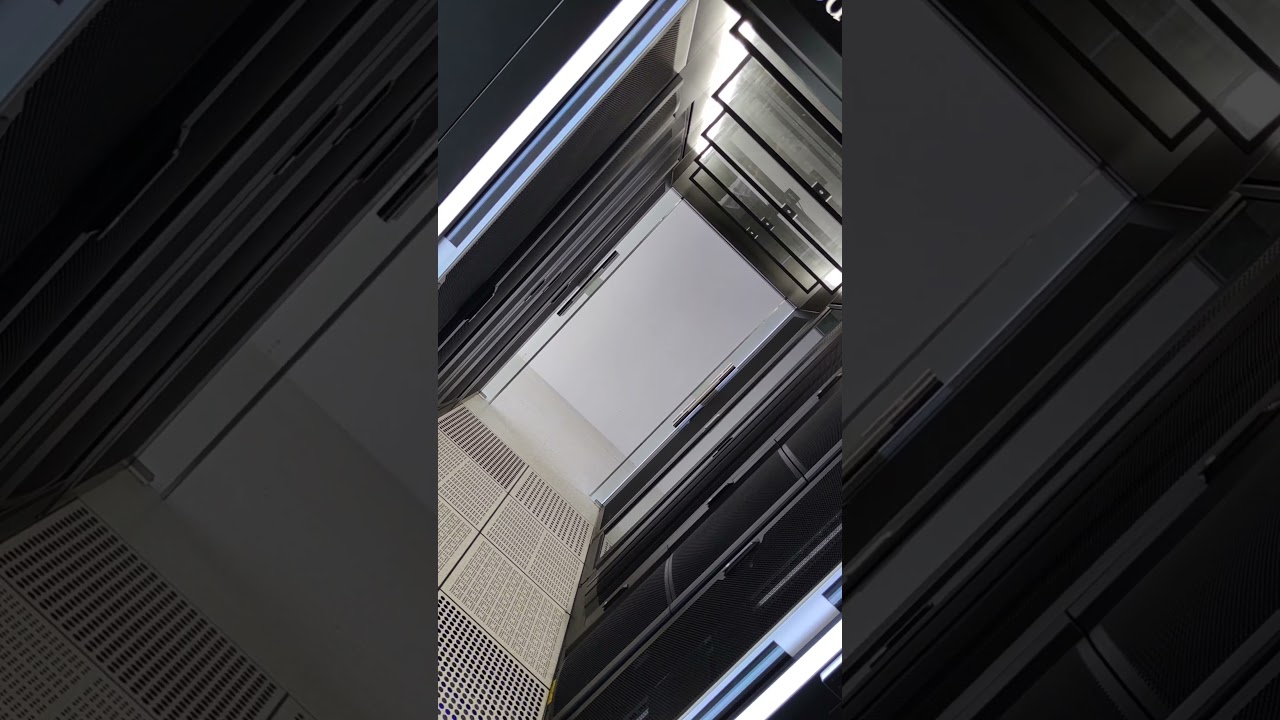
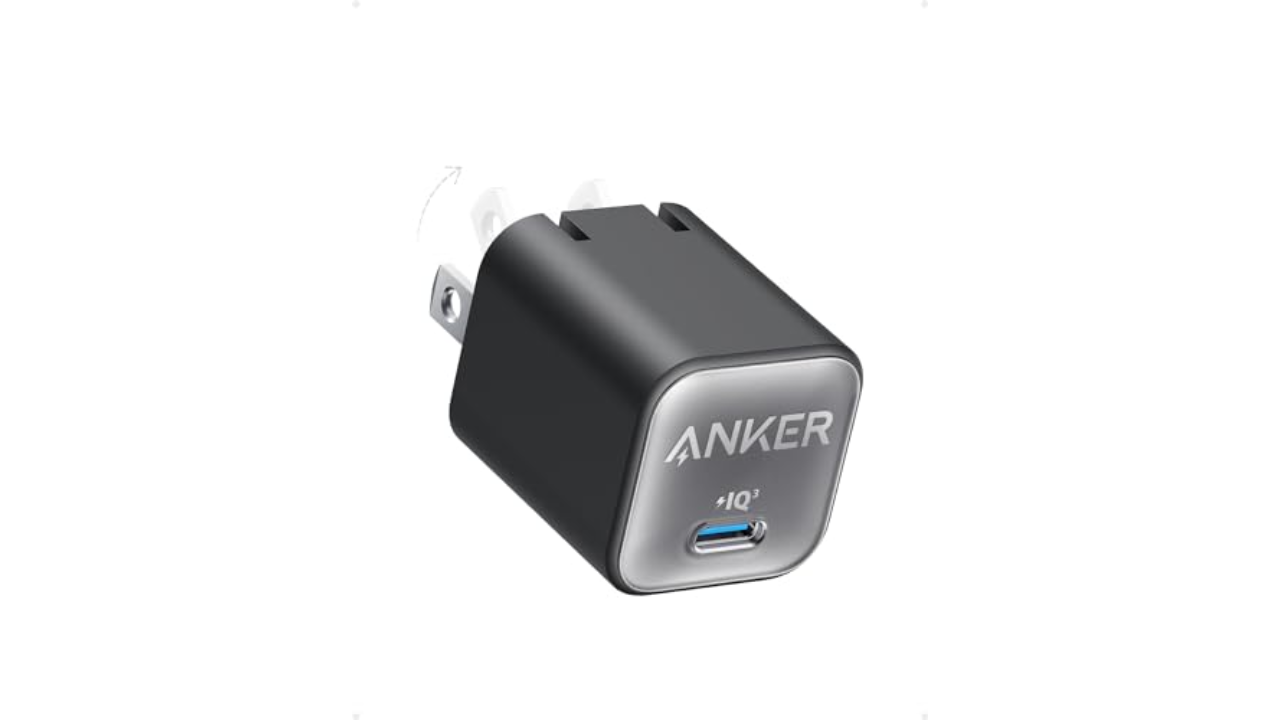
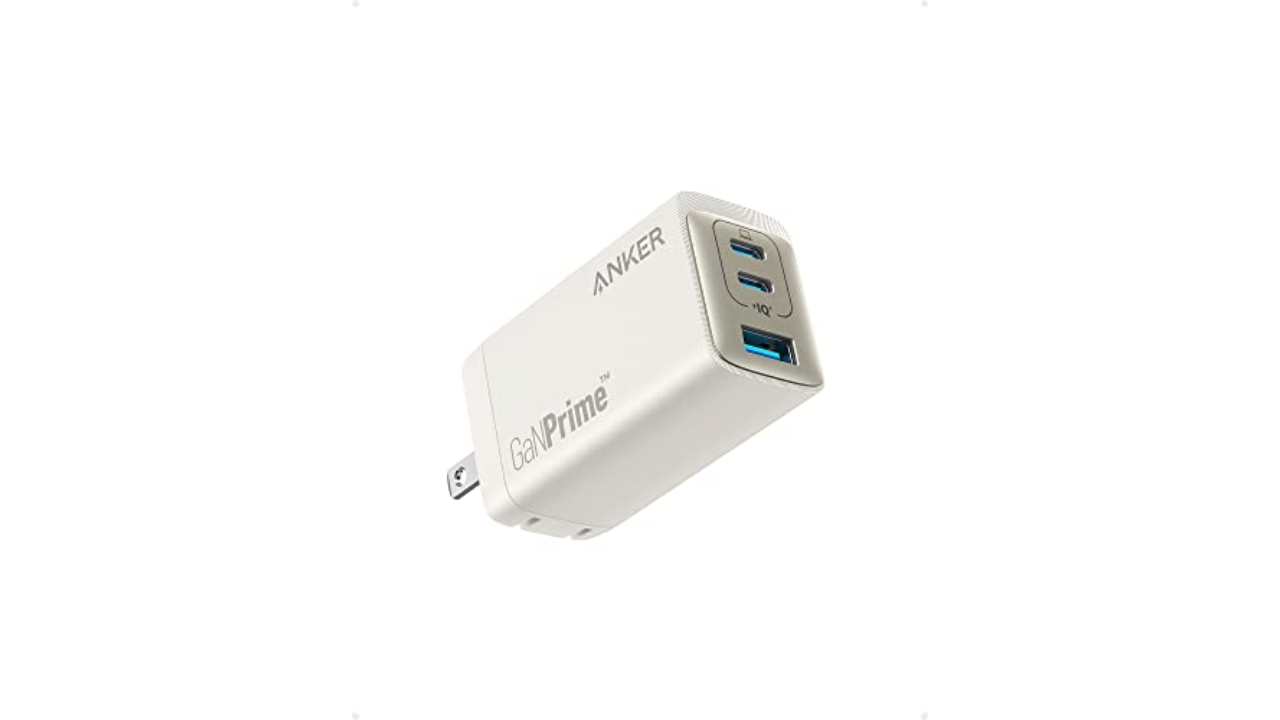
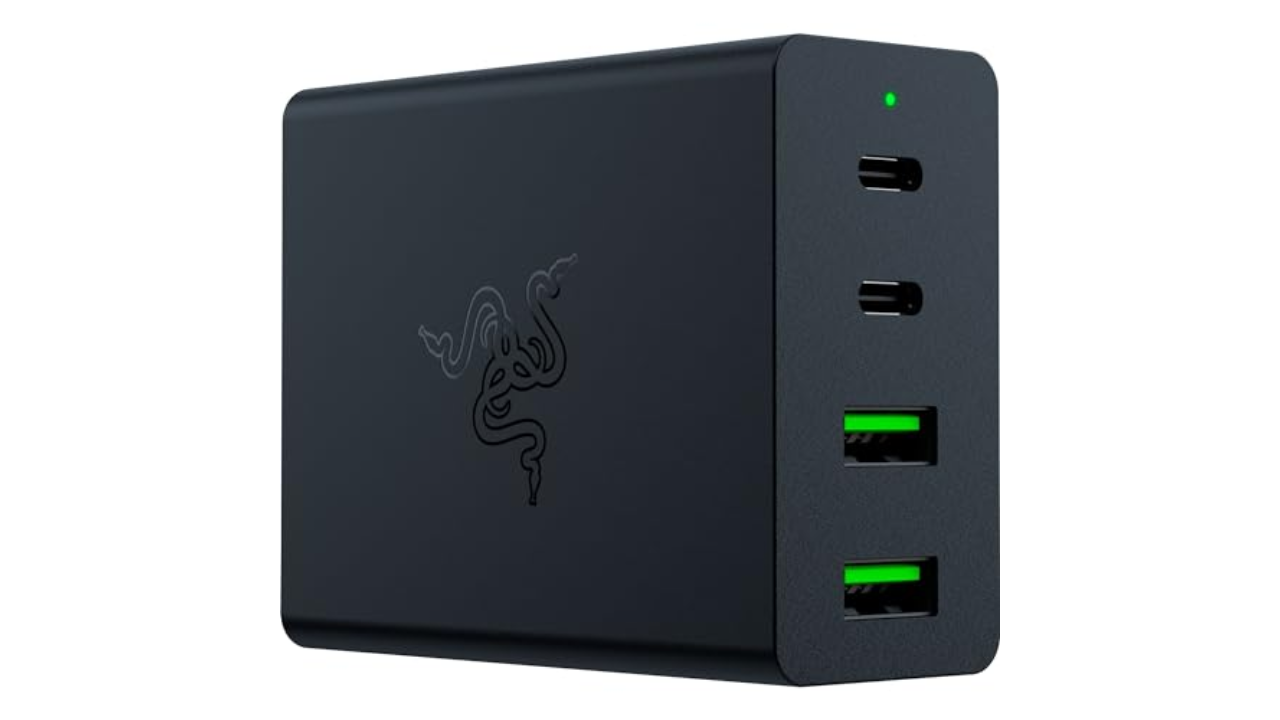
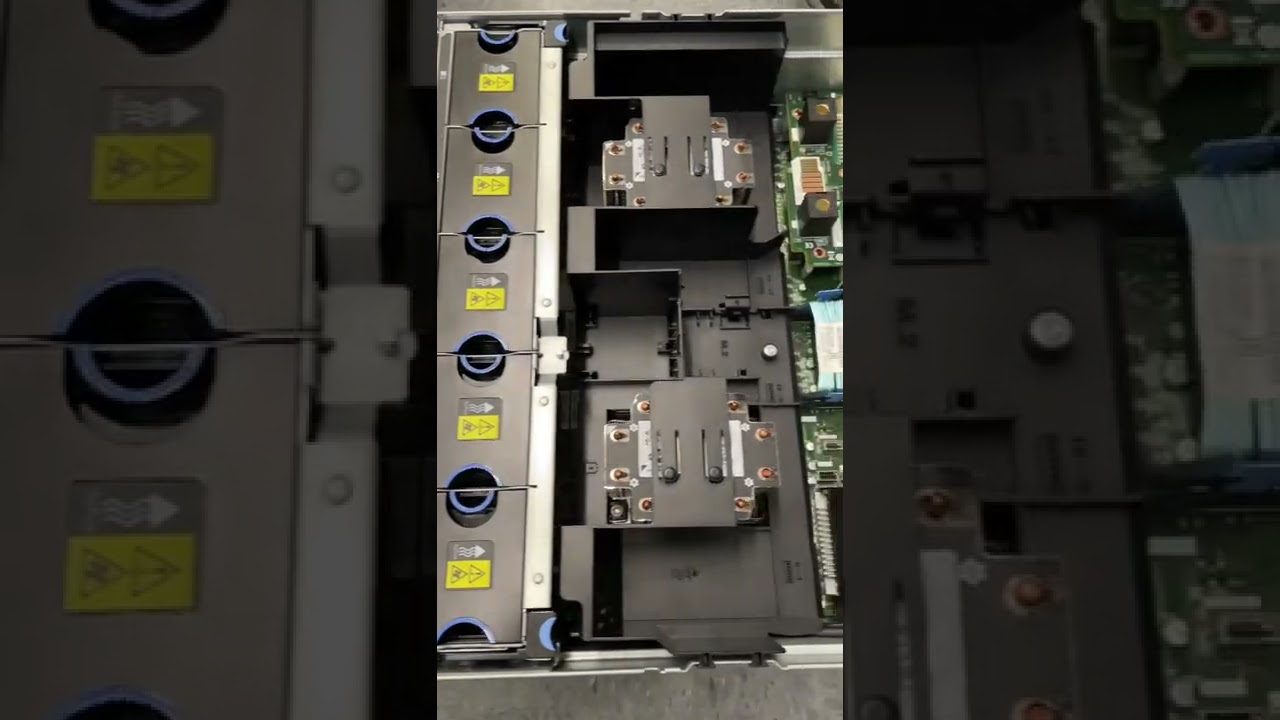
You must be logged in to post a comment Login